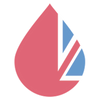9 signs you could be low in iron
Checking in on our health is so important. So many of the common conditions which go on to be serious and debilitating, if caught early, are easily managed through diet or lifestyle changes. And being aware of the different risks at every age can help you know what to be on the lookout for.

Iron is essential for making haemoglobin, a protein found in red blood cells that helps them to carry oxygen through your blood vessels.
If there isn’t enough haemoglobin in your blood, your tissues and muscles can’t get enough oxygen to be able to work effectively, leading to a condition called anaemia.
There are various types of anaemia, but iron deficiency anaemia is the most common. Signs and symptoms of iron deficiency vary depending on your age, your general health and how severe the anaemia is.
Here are 9 signs and symptoms of iron deficiency to be on the lookout for.
Always feeling tired
Feeling constantly tired is one of the most common symptoms of iron deficiency anaemia. Without enough haemoglobin, less oxygen reaches your tissues and muscles, depriving them of energy. Your heart also has to work harder to move more oxygen-rich blood around your body, which can leave you feeling tired.
While it’s one of the most common symptoms, it’s also one of the most easily dismissed. Busy lifestyles mean we often overlook feeling tired without realising it could be a sign of a deficiency.
Headaches
Another common complaint linked to anaemia; headaches can be particularly prevalent for people who are menstruating.
Heart palpitations
With iron deficiency, low levels of haemoglobin mean the heart has to work extra hard to carry oxygen around the body. This can lead to irregular heartbeats or the feeling that your heart is beating abnormally fast.
Pale skin
Skin that’s paler than usual is another common symptom of iron deficiency. The haemoglobin in red blood cells gives blood its colour, so low levels caused by iron deficiency make the blood less vibrant. Paleness is often one of the first things doctors will look for as a sign of iron deficiency and is more commonly seen in moderate to severe cases of anaemia.
Dry and damaged hair and skin
Iron deficiency can lead to reduced oxygen available to cells that cause hair and skin growth and regeneration, causing it to become dry and weak. While it’s normal to shed hair during everyday washing and brushing, if you’re losing clumps or large amounts, it may be related to iron deficiency.
Shortness of breath
When haemoglobin levels are low during iron deficiency, oxygen levels are also reduced. This means that your muscles won’t receive enough oxygen to do normal activities, such as walking.
If you find yourself out of breath when doing daily tasks that you used to find easy, such as walking, climbing stairs, or working out, iron deficiency may be to blame.
Sore or swollen tongue or mouth
The inside or outside of your mouth can indicate an iron deficiency. Signs include a swollen, inflamed, pale, or strangely smooth tongue. Iron deficiency may also cause other symptoms such as:
- burning feeling in your mouth
- dry mouth
- mouth ulcers
- sore cracks at the corners of your mouth
Restless legs
Iron deficiency has been linked to restless leg syndrome – a strong urge to move your legs which may also cause crawling or itching sensations in your feet and legs. It’s usually worse at night, meaning that you may find it difficult to sleep.
The causes of restless leg syndrome are not fully understood. However, it’s known to occur secondary to various medical conditions, including anaemia. People with iron deficiency anaemia are six times more likely to have restless leg syndrome.
Brittle fingernails
Another symptom of iron deficiency is brittle or spoon-shaped fingernails, known as koilonychia. Usually, the first sign is brittle nails that break easily.
In later stages of iron deficiency, you may notice spoon-shaped nails where the middle of the nail dips and the edges raise to give a rounded appearance. This occurs in only about 5% of people with iron deficiency and is usually seen only in severe cases.
Worried about your iron levels?
Our Iron blood test is a quick and convenient way to check your iron levels.
We partner with Spire Healthcare to offer a professional phlebotomy service. This guarantees that your blood samples are taken and handled correctly and that your results are processed efficiently by clinical professionals. Our confidential blood tests are available at over thirty private clinics around the UK.
At your appointment, the friendly team will talk to you about your test, collect your blood sample and send it off for testing at an accredited partner laboratory. All you need to do is arrive for your appointment. We’ll take care of the test, and the rest.
Clear, accurate results
The time it takes to receive your results will depend on the type of test you have chosen. When they are ready, your results will be sent directly to you, via email, within the time specified. If you would prefer to receive a paper copy of your results through the post, that can be arranged for you.
You can also choose the option of reported or unreported results. Reported results include information and comment from our GP which you may find helpful to discuss with your own consultant, or for your records.

